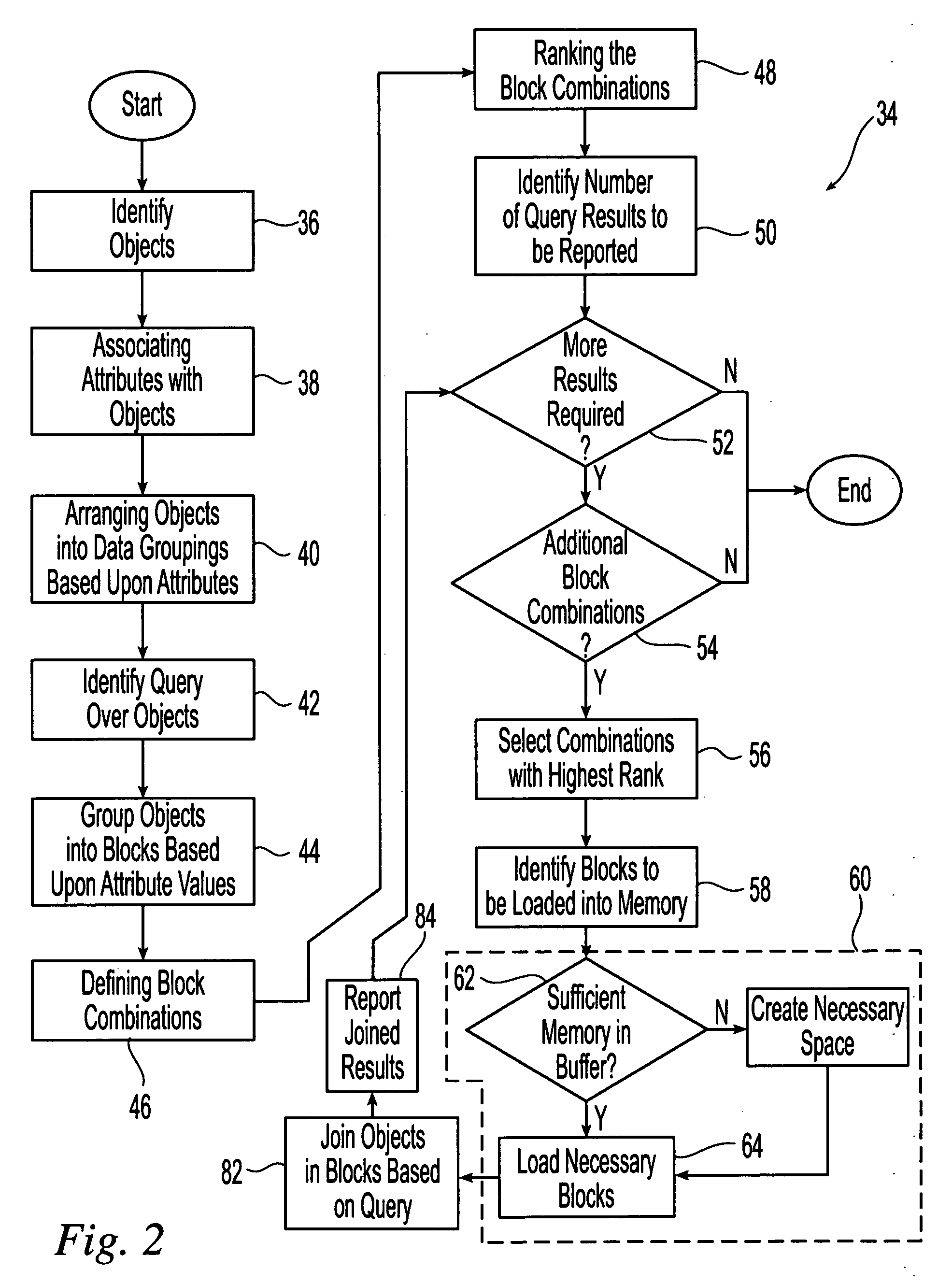Method for merging multiple ranked lists with bounded memory
a ranked list and memory-bound technology, applied in the field of information integration techniques, can solve the problems of inability to meet the needs of interactive query applications, prohibitive approaches in distributed settings, and failure to take into account memory constraints and disk/memory swapping costs, so as to reduce the overall response time, reduce the expected response time, and reduce the response time of ranked multi-feature queries
- Summary
- Abstract
- Description
- Claims
- Application Information
AI Technical Summary
Benefits of technology
Problems solved by technology
Method used
Image
Examples
Embodiment Construction
[0020] Referring initially to FIG. 1, an embodiment of a system 10 for use with a method for conducting an attribute-based query over a plurality objects in accordance with an exemplary embodiment of the present invention is illustrated. The system 10 includes a query governor 12 and one or more data sources or data groups 14. The query governor 12, which is in communication with one or more users 15, issues queries 16 and presents the results of these queries to the users 15. The query governor 12 also specifies various query parameters for the queries that it issues. These query parameters include an identification of the objects over which the query is to be conducted, the attributes desired in those objects, weights associated with aggregation functions to be used in assembling the objects and any other user-defined query parameter.
[0021] The data groups 14 contain the objects over which the queries are conducted. These objects can be any item to which attributes or features ca...
PUM
 Login to View More
Login to View More Abstract
Description
Claims
Application Information
 Login to View More
Login to View More - R&D
- Intellectual Property
- Life Sciences
- Materials
- Tech Scout
- Unparalleled Data Quality
- Higher Quality Content
- 60% Fewer Hallucinations
Browse by: Latest US Patents, China's latest patents, Technical Efficacy Thesaurus, Application Domain, Technology Topic, Popular Technical Reports.
© 2025 PatSnap. All rights reserved.Legal|Privacy policy|Modern Slavery Act Transparency Statement|Sitemap|About US| Contact US: help@patsnap.com



